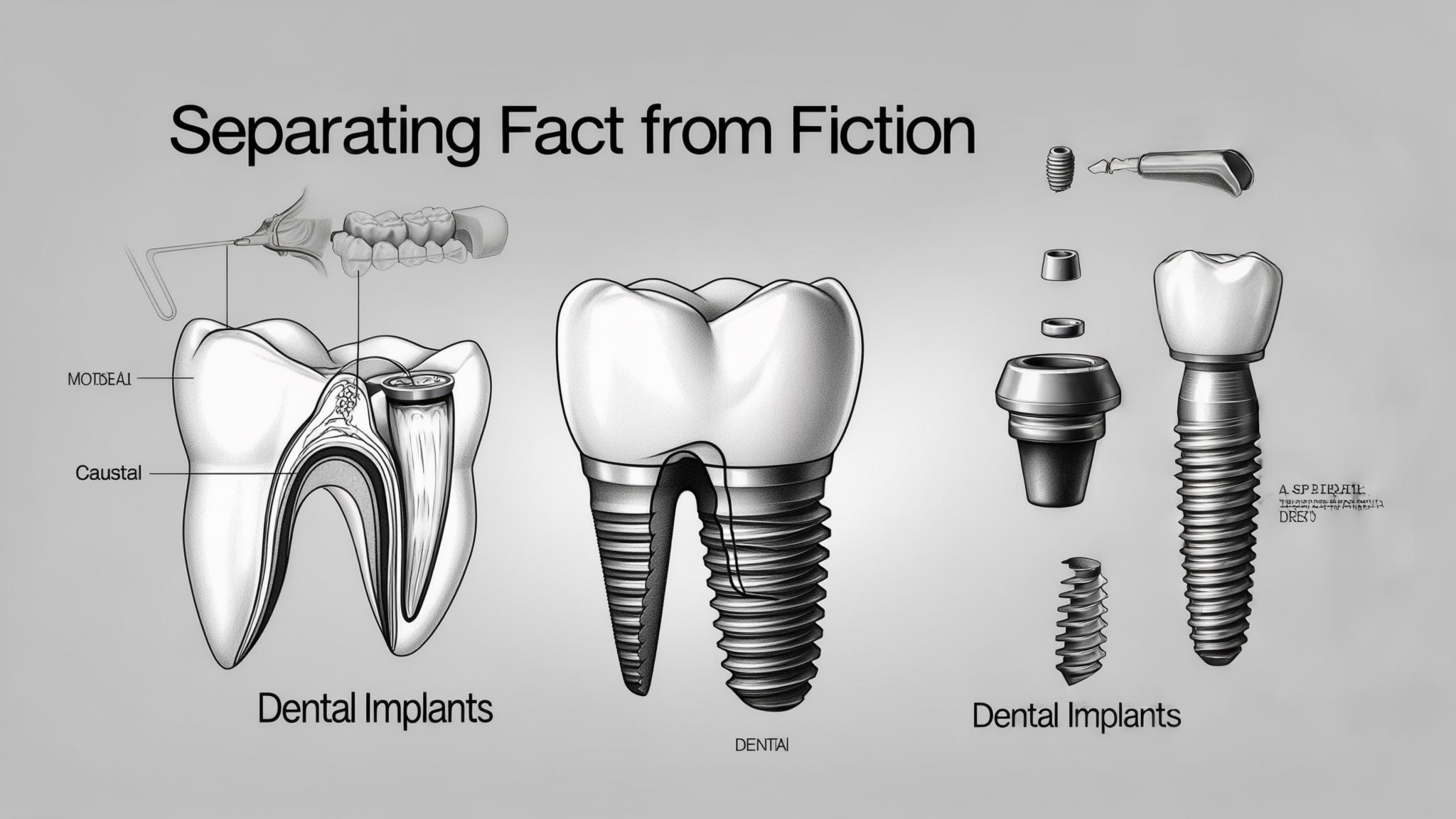Understanding Dental Implants
Dental implants are a revolutionary solution for replacing missing teeth. They serve as artificial tooth roots, providing a strong foundation for fixed or removable replacement teeth. A typical dental implant consists of three main components: the implant fixture, which is surgically placed into the jawbone; the abutment, which connects the fixture to the replacement tooth; and the crown, which is the visible part that looks and functions like a natural tooth.
The dental implant procedure involves several steps. First, the dentist evaluates the patient's oral health and bone structure. Then, the implant fixture is inserted into the jawbone, where it fuses over time in a process called osseointegration. After healing, the abutment is attached, followed by the crown, completing the restoration.
Common Myths About Dental Implants
Myth 1: Dental Implants Are Only for Older Adults
Contrary to popular belief, dental implants are not restricted to older adults. Candidates for implants range widely in age, from young adults who have lost teeth due to injury or decay to older adults seeking improved oral function. Factors such as bone health and oral hygiene are more critical in determining candidacy than age alone.
Myth 2: Dental Implants Are Extremely Painful
Many people fear that dental implants will be painful, but modern pain management techniques make the procedure quite manageable. Dentists use local anesthesia and sedation to ensure comfort. Most patients report that the pain is comparable to having a tooth extracted, which is generally mild and can be managed with over-the-counter pain relievers.
Myth 3: Dental Implants Require Extensive Surgery
While dental implants do involve surgery, it is often less invasive than people imagine. Advances in dental technology have led to minimally invasive techniques that reduce recovery time and discomfort. The procedure is typically performed on an outpatient basis, allowing patients to return home the same day.
Myth 4: Dental Implants Are Not as Strong as Natural Teeth
Dental implants are made from durable materials like titanium and ceramics, which are known for their strength and biocompatibility. In many cases, implants can be stronger than natural teeth, providing a long-lasting solution for tooth replacement.
Myth 5: Dental Implants Are Too Expensive
While the initial cost of dental implants may be higher than other options, they are a cost-effective solution in the long run. Implants can last a lifetime with proper care, reducing the need for frequent replacements and associated costs seen with dentures or bridges.
Myth 6: Dental Implants Are Not Safe
Dental implants are a safe and well-established procedure with high success rates. Complications are rare and can often be managed effectively. Dentists take great care in assessing each patient's suitability for implants, ensuring the best possible outcome.
Myth 7: Dental Implants Require Special Maintenance
Caring for dental implants is much like caring for natural teeth. Regular brushing, flossing, and dental check-ups are essential. Unlike dentures, implants do not require special cleaning solutions or adhesives, making them a convenient option for tooth replacement.
Realities of Dental Implants
Dental implants boast impressive success rates, often exceeding 95%. Patients frequently report high satisfaction, noting improved chewing ability, speech, and confidence. For instance, John, a 45-year-old patient, described his implant experience as life-changing, allowing him to enjoy his favorite foods without worry.
Choosing a qualified dentist is crucial for implant success. A skilled professional can guide patients through the process, ensuring a smooth and successful outcome.
Conclusion
In summary, dental implants offer a reliable and effective solution for missing teeth. By debunking myths, we hope to clarify misconceptions and highlight the true benefits of implants. If you're considering dental implants, consult with a dental professional to explore your options and improve your oral health and quality of life.
References
- American Academy of Implant Dentistry
- National Institute of Dental and Craniofacial Research
- Studies on dental implant success rates and patient satisfaction

